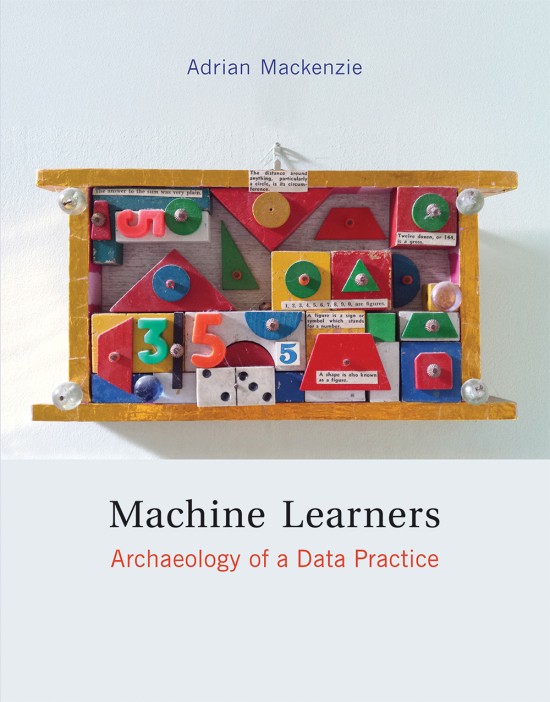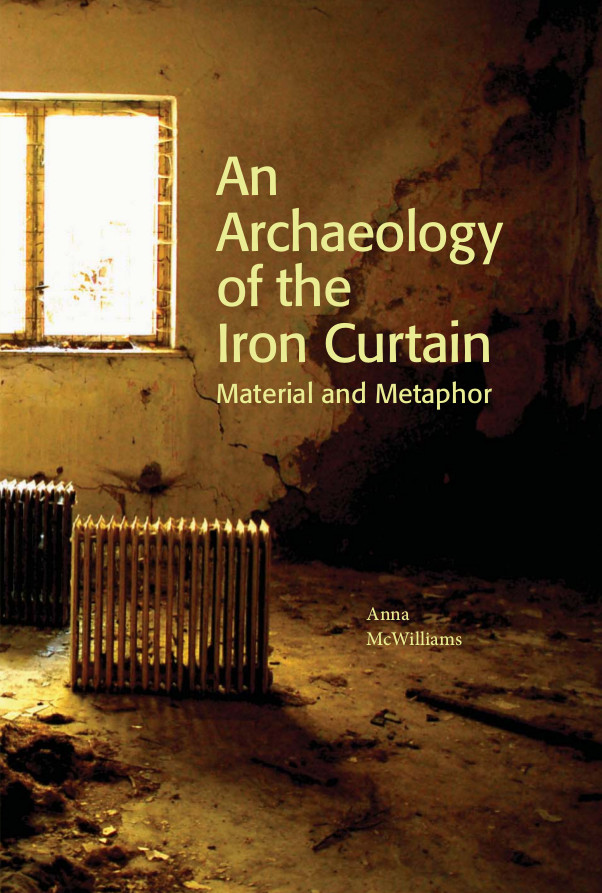Adrian Mackenzie: Machine Learners: Archaeology of a Data Practice (2017)
Filed under book | Tags: · abstraction, algorithm, archaeology, artificial intelligence, code, data, diagram, error, information science, information theory, knowledge, machine learning, mathematics, neural networks, programming, theory

“If machine learning transforms the nature of knowledge, does it also transform the practice of critical thought?
Machine learning—programming computers to learn from data—has spread across scientific disciplines, media, entertainment, and government. Medical research, autonomous vehicles, credit transaction processing, computer gaming, recommendation systems, finance, surveillance, and robotics use machine learning. Machine learning devices (sometimes understood as scientific models, sometimes as operational algorithms) anchor the field of data science. They have also become mundane mechanisms deeply embedded in a variety of systems and gadgets. In contexts from the everyday to the esoteric, machine learning is said to transform the nature of knowledge. In this book, Adrian Mackenzie investigates whether machine learning also transforms the practice of critical thinking.
Mackenzie focuses on machine learners—either humans and machines or human-machine relations—situated among settings, data, and devices. The settings range from fMRI to Facebook; the data anything from cat images to DNA sequences; the devices include neural networks, support vector machines, and decision trees. He examines specific learning algorithms—writing code and writing about code—and develops an archaeology of operations that, following Foucault, views machine learning as a form of knowledge production and a strategy of power. Exploring layers of abstraction, data infrastructures, coding practices, diagrams, mathematical formalisms, and the social organization of machine learning, Mackenzie traces the mostly invisible architecture of one of the central zones of contemporary technological cultures.
Mackenzie’s account of machine learning locates places in which a sense of agency can take root. His archaeology of the operational formation of machine learning does not unearth the footprint of a strategic monolith but reveals the local tributaries of force that feed into the generalization and plurality of the field.”
Publisher MIT Press, November 2017
ISBN 9780262036825, 0262036827
272 pages
via A.B.
Review: Graham White (Computational Culture, 2021)
PDF (removed on 2018-8-20 upon request from publisher)
Draft and code samples on GIT
Anna McWilliams: An Archaeology of the Iron Curtain: Material and Metaphor (2013)
Filed under book, thesis | Tags: · archaeology, borders, cold war, metaphor

The Iron Curtain was seen as the divider between East and West in Cold War Europe. The term refers to a material reality but it is also a metaphor; a metaphor that has become so powerful that it tends to mark our historical understanding of the period. Through the archaeological study of three areas that can be considered part of the former Iron Curtain, the Czech-Austrian border, the Italian-Slovenian border and the Berlin Wall, this research investigates the relationship between the material and the metaphor of the Iron Curtain.
“This work falls within what is usually referred to as contemporary archaeology, a fairly young sub-discipline of archaeology. Few large research projects have so far been published, and methods have been described as still somewhat experimental. Through the fieldwork it has been possible to acknowledge and highlight the problems and opportunities within contemporary archaeology. It has become clear how the materials stretch both through time and place demonstrating the complex process of how the material that archaeologists investigate can be created.”
Publisher Södertörns högskola, Stockholm, 2013
Open Access
ISBN 9789186069780
239 pages
PDF (6 MB)
Comment (0)Antiquity and Photography: Early Views of Ancient Mediterranean Sites (2005)
Filed under book, catalogue | Tags: · 1800s, antiquity, archaeology, architecture, history of photography, mediterranean, photography, sculpture

“The invention of the daguerreotype and calotype processes fundamentally changed scholarly and aesthetic approaches to the past. The accuracy and immediacy of photographs gave scientists a new means to document and study ancient architecture, artifacts, and language. At the same, the first photographers to visit ancient Mediterranean sites saw themselves as artists using the new medium to capture what had up to then been represented only by draftsmen or painters. The early photographs were rapidly disseminated among a wider audience eager to see, rather than merely imagine, the remnants of antiquity. Today these images are still prized, both for their vision and originality and for their inherent documentary value. The early photographs of the Roman Forum, the Acropolis in Athens, and the pyramids of Giza have made these sites a part of our shared cultural experience, fixing them in our minds as places of historic—and mythic—significance.
Antiquity and Photography explores the influence of photography on archaeology between 1840 and 1880. This was the period that saw the evolution of archaeology as a professional discipline as well as the rapid growth of the new photographic medium. With illustrations drawn from the collections of the Getty Museum and the Getty Research Institute, the essays in this book examine the growth of archaeology as a scientific discipline and its increasing reliance on photographic documentation, and they consider some of the conventions that came to govern the ostensibly objective photographs of antiquities and ancient sites. Biographical essays explore the careers of two major early photographers, Joseph-Philibert Girault de Prangey and William James Stillman. In addition, portfolios with works by Maxime Du Camp, John Beasley Greene, Francis Frith, Robert Macpherson, Adolphe Braun, and others testify to the strength and consistency of other early photographers who captured the antique worlds around the Mediterranean.”
By Claire L. Lyons, John K. Papadopoulos, Lindsey S. Stewart, and Andrew Szegedy-Maszak
Publisher Getty Publications, Los Angeles, 2005
Open Access
ISBN 0892368055, 9780892368051
226 pages
Reviews: Eisman (Bryn Mawr Classical Review, 2006), Rose (Archaeology, 2006), Damsker (PhotoCentral, n.d.).
PDF (32 MB, from the publisher)
Comment (1)
